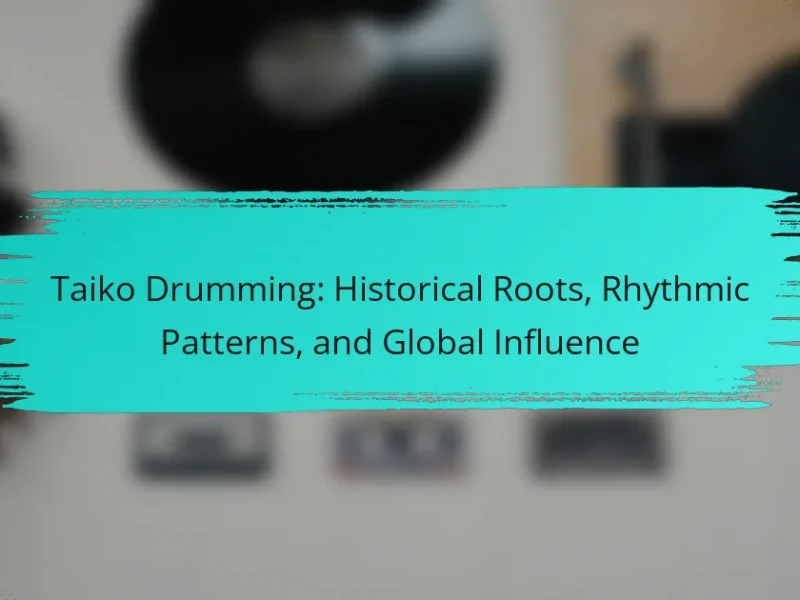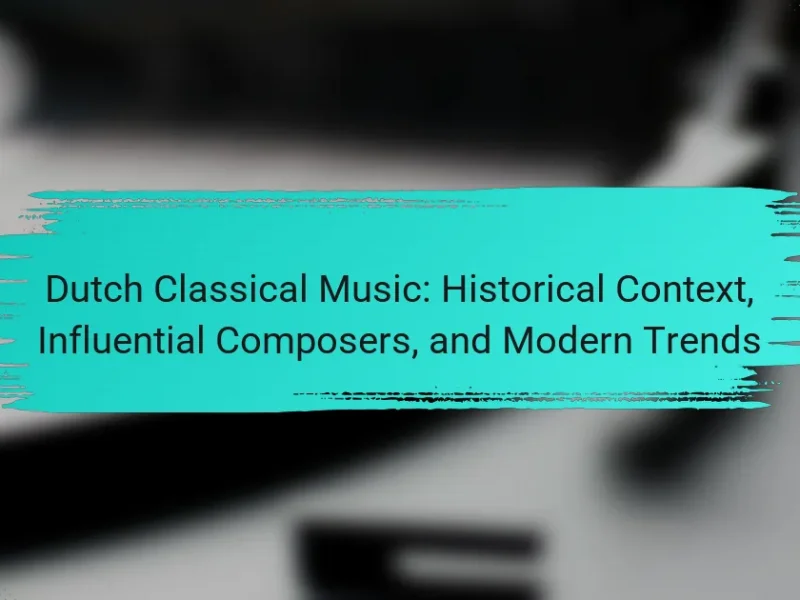Gamelan music offers a rich exploration of traditional instruments, unique performance practices, and contemporary fusion styles. Discover how regional variations shape its sound and cultural significance. Learn about the intricate rhythms and communal aspects of Gamelan performances. Explore innovative blends with modern genres that highlight its adaptability and ongoing relevance.
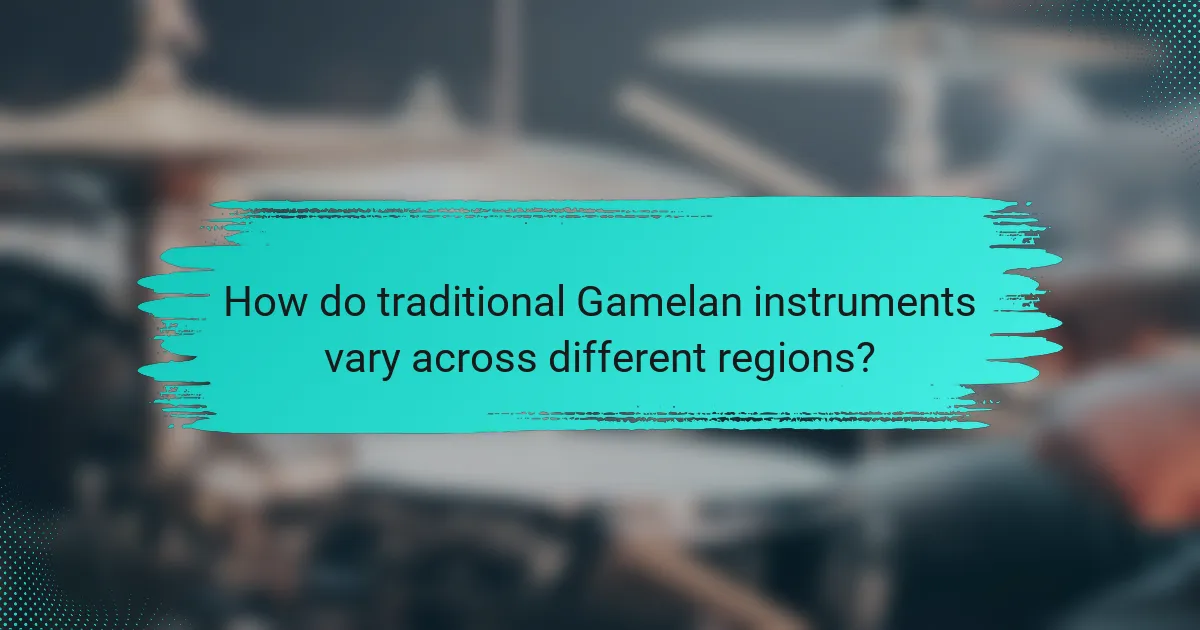
How do traditional Gamelan instruments vary across different regions?
Traditional Gamelan instruments vary significantly across regions, reflecting local cultures and influences. In Java, the Gamelan typically features instruments like the metallophones and gongs, emphasizing intricate melodies. In Bali, Gamelan ensembles often include more percussive elements, creating dynamic and fast-paced performances. Sulawesi showcases unique stringed instruments, highlighting regional craftsmanship. Each region’s Gamelan style embodies distinct performance practices, instrumentation, and cultural narratives, enriching the overall Gamelan tradition.
What are the key components of a Balinese Gamelan ensemble?
A Balinese Gamelan ensemble consists of various traditional instruments, primarily including metallophones, gongs, and drums. Key components are the gangsa (metallophones), kendang (drums), and gongs, each contributing unique rhythmic and melodic elements. The ensemble typically features a rich layering of sound, with the interlocking patterns of instruments creating complex textures. Unique to Balinese Gamelan is its use of slendro and pelog scales, which shape the ensemble’s distinct sound. Performance practices emphasize communal participation and ritualistic elements, enhancing the cultural significance of the music.
How does Javanese Gamelan differ in instrumentation and style?
Javanese Gamelan differs in instrumentation and style through its unique ensemble configuration and traditional performance practices. The instrumentation includes metallophones, gongs, and drums, each contributing to a rich, layered sound. Javanese Gamelan emphasizes a slower, more meditative style, contrasting with Balinese Gamelan’s faster, more energetic approach. Unique attributes include the use of specific scales, such as slendro and pelog, which shape the musical structure. Additionally, Javanese Gamelan often incorporates dance and visual elements, enhancing the overall performance experience.
Which unique instruments are found in Sundanese Gamelan?
Sundanese Gamelan features unique instruments like the angklung, kecapi, and saron. The angklung, made from bamboo, produces distinct resonant tones. The kecapi is a zither that adds melodic depth. The saron, a metallophone, delivers sharp, clear sounds essential for rhythmic patterns. These instruments contribute to the rich cultural tapestry of Sundanese music.
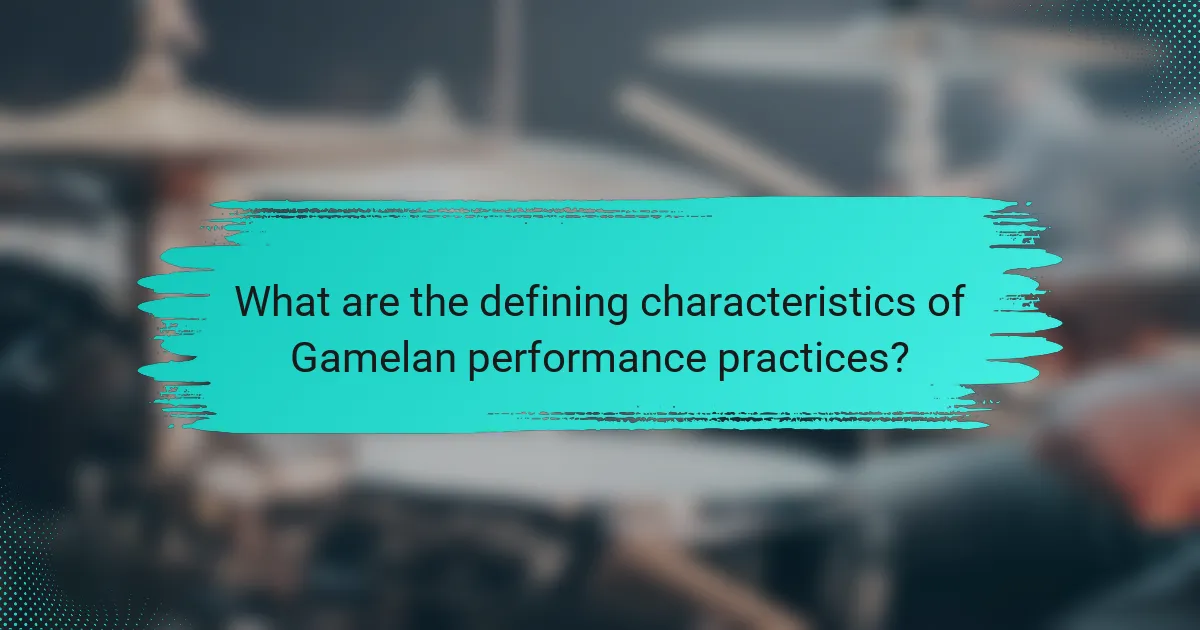
What are the defining characteristics of Gamelan performance practices?
Gamelan performance practices are characterized by intricate interlocking rhythms, communal participation, and a strong emphasis on improvisation. Musicians play various traditional instruments, including metallophones and drums, creating a rich tapestry of sound. Each performance reflects local culture and spirituality, often incorporating dance and storytelling. Unique attributes include the use of specific scales, such as slendro and pelog, which shape the music’s distinct character. Additionally, contemporary fusion often blends traditional elements with modern genres, showcasing the adaptability of Gamelan.
How do Gamelan performances integrate ritual and community?
Gamelan performances deeply integrate ritual and community through shared cultural practices and collective participation. These performances often occur during significant ceremonies, fostering a sense of unity among participants. The communal aspect is highlighted by the ensemble nature of Gamelan, where musicians collaborate to create harmonious sounds, reflecting their interconnectedness. Rituals provide a framework for these performances, imbuing them with spiritual significance and reinforcing cultural identity. Additionally, contemporary fusion incorporates diverse influences, further enriching community engagement while preserving traditional roots.
What role does improvisation play in Gamelan music?
Improvisation is crucial in Gamelan music, allowing performers to express creativity within structured frameworks. It enriches the ensemble’s dynamic, enabling musicians to interact spontaneously while adhering to traditional patterns. This interplay fosters a unique sound, blending individual artistry with collective performance. Improvisation also reflects the cultural context, showcasing local traditions and personal interpretations.
How is the conductor’s role significant in Gamelan ensembles?
The conductor’s role is crucial in Gamelan ensembles as they guide the performance and maintain cohesion among musicians. They interpret the music, ensuring that the intricate rhythms and melodies align. The conductor also facilitates communication, helping to balance the diverse instruments, which include metallophones, gongs, and drums. This leadership enhances the ensemble’s overall sound, allowing for a harmonious blend of traditional and contemporary elements. A skilled conductor can adapt the performance dynamically, responding to the musicians’ expressions and the audience’s energy, thus enriching the cultural experience.
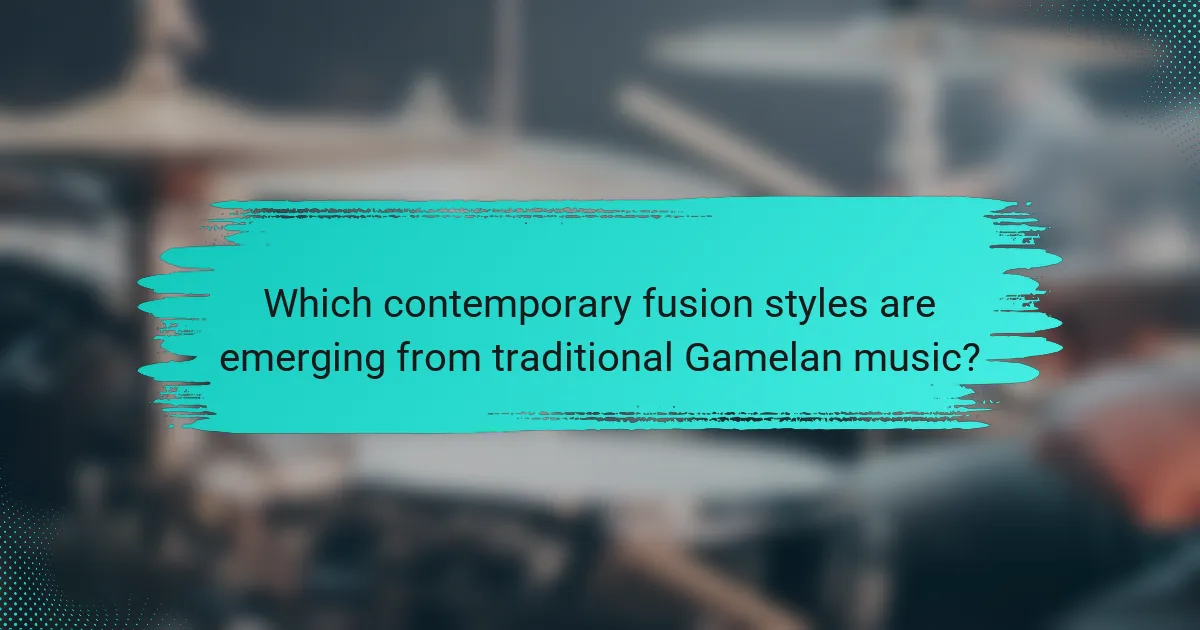
Which contemporary fusion styles are emerging from traditional Gamelan music?
Contemporary fusion styles emerging from traditional Gamelan music include electronic Gamelan, jazz-infused Gamelan, and world music collaborations. These styles blend traditional instruments with modern genres, creating innovative soundscapes. For instance, electronic Gamelan integrates synthesizers and digital effects, enhancing the traditional sound with contemporary elements. Jazz-infused Gamelan incorporates improvisation and harmonic complexity, enriching performances. World music collaborations often feature Gamelan alongside various global musical traditions, promoting cross-cultural exchange.
How are modern artists incorporating Gamelan into pop music?
Modern artists are creatively blending Gamelan elements into pop music, enhancing its rhythmic and melodic complexity. This fusion often incorporates traditional Gamelan instruments, such as metallophones and gongs, alongside electronic beats and contemporary vocals.
For instance, artists like Björk and the band Goldfrapp have utilized Gamelan sounds to create unique sonic textures. This integration not only preserves Gamelan’s cultural essence but also introduces it to wider audiences, showcasing its versatility.
Additionally, collaborations between traditional Gamelan ensembles and pop musicians are becoming more common, allowing for innovative performances that highlight both genres. This cross-cultural exchange enriches the pop music landscape, making Gamelan a vibrant part of modern music.
As a result, the incorporation of Gamelan into pop music reflects a growing appreciation for diverse musical traditions and their potential to influence contemporary sounds.
What are the influences of Gamelan on global music genres?
Gamelan significantly influences global music genres through its unique rhythmic structures and tonal systems. Traditional Gamelan ensembles, featuring instruments like metallophones and gongs, introduce intricate layering and polyrhythms.
Contemporary fusion genres incorporate Gamelan elements, blending them with Western styles such as jazz and pop. This cross-cultural exchange enriches musical diversity, showcasing the adaptability of Gamelan’s melodic and rhythmic characteristics.
Notably, artists like Brian Eno and Philip Glass have integrated Gamelan into their compositions, highlighting its impact on ambient and minimalist music. The global reach of Gamelan continues to inspire musicians, fostering a shared musical language that transcends cultural boundaries.
Which collaborations have bridged Gamelan with Western classical music?
Collaborations bridging Gamelan with Western classical music include notable projects by artists like Lou Harrison and Philip Glass. These musicians integrated Gamelan’s unique rhythms and scales into their compositions, creating innovative fusions. For example, Harrison’s “La Koro Sutro” exemplifies this blend, featuring Gamelan instruments alongside Western orchestration. Additionally, contemporary ensembles like Gamelan Sekar Jaya actively perform works that merge these musical traditions, showcasing the adaptability of Gamelan in diverse contexts. Such collaborations highlight the rich dialogue between Eastern and Western musical practices, enriching both genres.
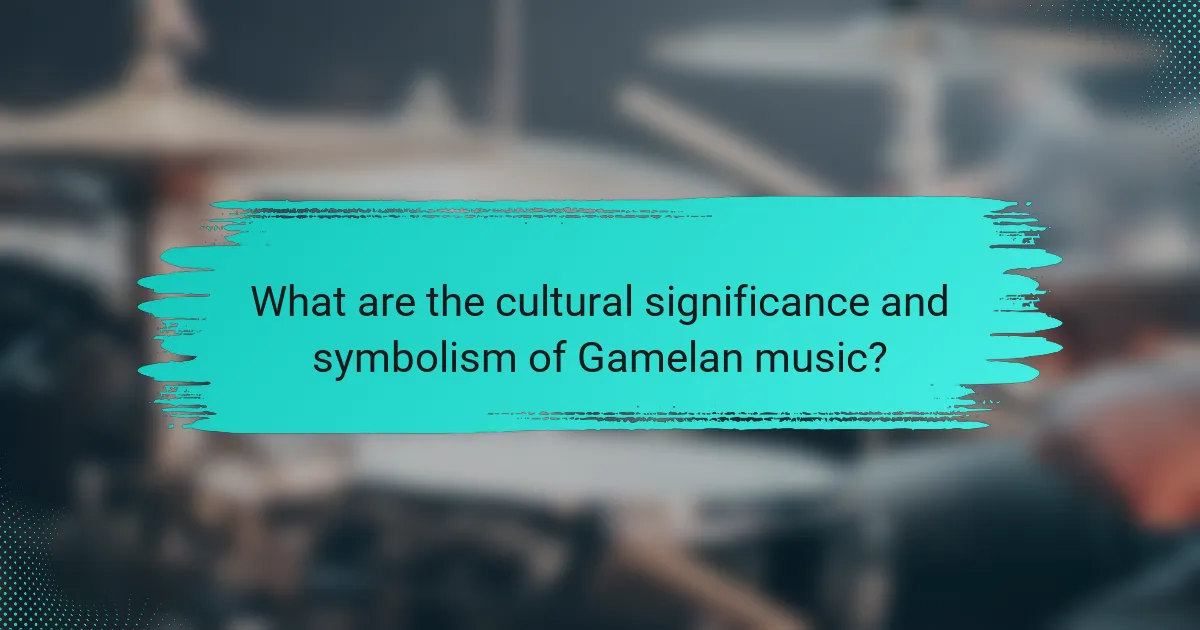
What are the cultural significance and symbolism of Gamelan music?
Gamelan music holds deep cultural significance and symbolizes community, spirituality, and tradition. It serves as a medium for storytelling and ritualistic expression in Indonesian culture. The ensemble’s intricate rhythms and melodies foster social cohesion and collective identity. Gamelan performances often accompany important ceremonies, reflecting values such as harmony and balance. The music embodies both historical narratives and contemporary expressions, showcasing its adaptability and ongoing relevance in modern contexts.
How does Gamelan music reflect social and spiritual beliefs?
Gamelan music embodies social and spiritual beliefs through its communal performances and ceremonial purposes. The ensemble fosters unity among participants, reflecting shared cultural values. Instruments like the gong serve as symbols of spiritual connection, while rhythmic patterns mirror life cycles and rituals. Contemporary fusion highlights the adaptability of Gamelan, allowing for the exploration of modern themes while preserving traditional roots. This blend reinforces the ongoing relevance of Gamelan in expressing identity and spirituality within society.
What are the connections between Gamelan and traditional storytelling?
Gamelan music deeply influences traditional storytelling by enhancing narratives through rhythm and melody. The intricate instrumentation supports character development and emotional depth. Gamelan’s unique attribute lies in its communal performance, fostering collective storytelling experiences. This interaction enriches cultural traditions, making stories more engaging and memorable.
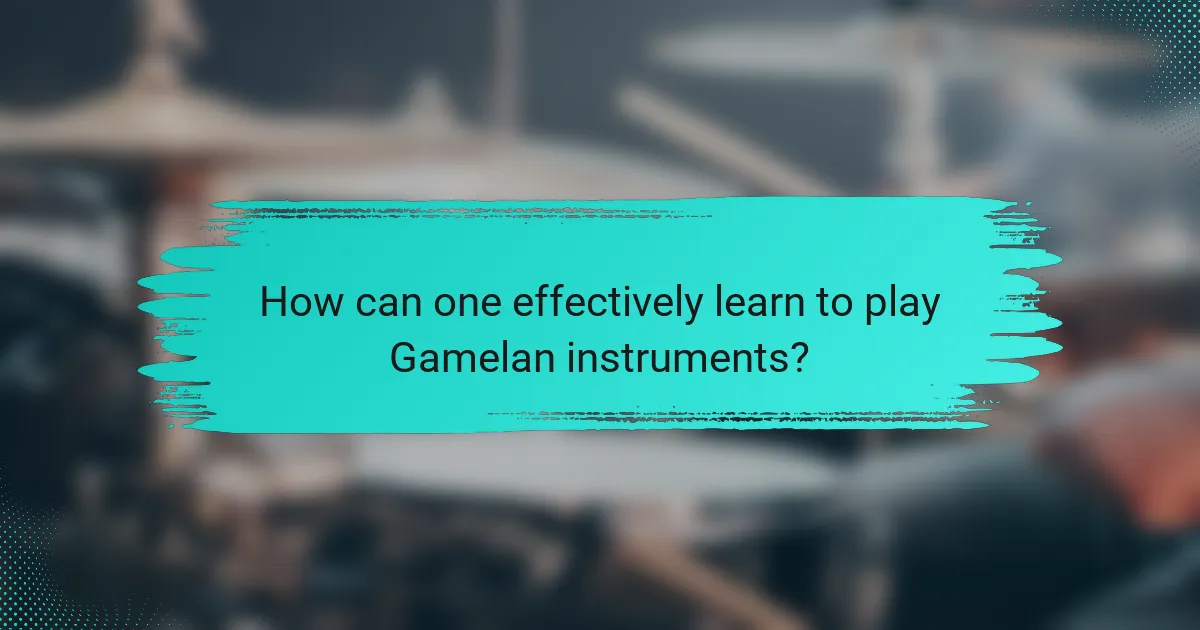
How can one effectively learn to play Gamelan instruments?
To effectively learn to play Gamelan instruments, immerse yourself in practice, seek guidance from experienced players, and engage with the cultural context. Start with basic techniques, focusing on rhythm and coordination. Regular group sessions enhance listening skills and ensemble play. Explore contemporary adaptations to broaden your understanding and creativity.
What are the best practices for beginners in Gamelan music?
To excel in Gamelan music, beginners should focus on listening, practicing regularly, and understanding the cultural context. Engaging with experienced musicians enhances learning.
1. Listen to recordings of traditional and contemporary Gamelan to grasp rhythms and melodies.
2. Practice consistently to develop timing and coordination.
3. Learn about the cultural significance of Gamelan in Indonesian ceremonies and celebrations.
4. Participate in group sessions to experience ensemble playing and improve teamwork skills.
Which resources are available for studying Gamelan online?
Numerous online resources are available for studying Gamelan. Websites like YouTube offer performance videos and tutorials. Online courses from platforms such as Coursera and Udemy provide structured learning. Additionally, academic institutions often share lecture notes and recordings on their websites. Virtual workshops by Gamelan ensembles facilitate interactive learning experiences. Online forums and social media groups connect enthusiasts for discussion and collaboration.
What common mistakes should new players avoid when learning Gamelan?
New players should avoid common mistakes like neglecting rhythm, ignoring instrument tuning, and underestimating teamwork. Failing to practice consistently can hinder progress, while not embracing cultural context may lead to misinterpretation of Gamelan’s essence. Additionally, overlooking the importance of listening to others can disrupt ensemble harmony.

